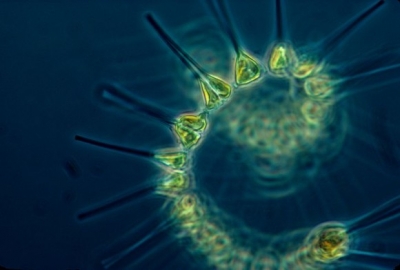
Most of the oxygen we breathe comes from the ocean. The ocean produces 70% of earth’s oxygen through the plants (phytoplankton, kelp and algal plankton) that live in it. These plants produce oxygen as a byproduct of photosynthesis, a process which converts carbon dioxide and sunlight into sugars the organism can use for energy. One type of phytoplankton, Prochlorococcus, releases countless tons of oxygen into the atmosphere. It is so small that millions can fit in a drop of water. Prochlorococcus has achieved fame as perhaps the most abundant photosynthetic organism on the planet. (World Oceans Day is on 8 June)
In the lab, scientists can determine how much oxygen is produced by a single phytoplankton cell. The hard part is figuring out the total number of these microscopic plants throughout Earth’s oceans. Phytoplankton wax and wane with the seasons. Phytoplankton blooms happen in spring when there’s more available light and nutrients.
And the density of phytoplankton varies. They sometimes float just at the surface. At other times and places they can be a hundred meters – about 100 yards – thick.
By the way, by about 400 million years ago, scientists say, enough oxygen had accumulated in Earth’s atmosphere for the evolution of air-breathing land animals. But free oxygen by itself wasn’t enough. Another form of oxygen was also essential: the build-up of a special kind of oxygen at the top of Earth’s atmosphere. There, where three atoms of oxygen bonded together, ozone formed. This layer of ozone at the top of Earth’s atmosphere shields land organisms from harmful ultraviolet radiation from the sun.
Credit : Earth Sky
Picture Credit : Google




